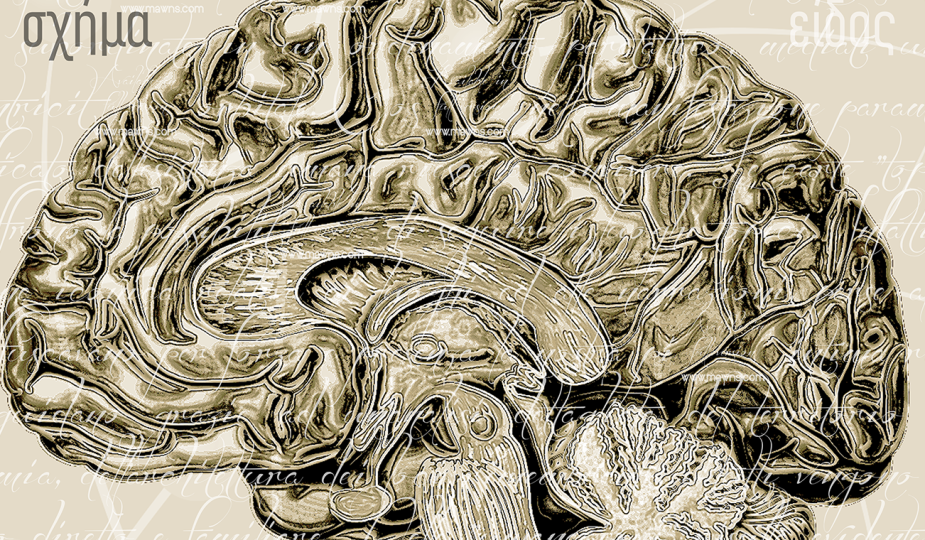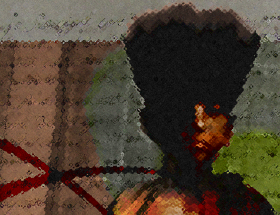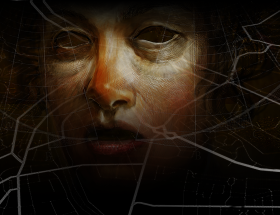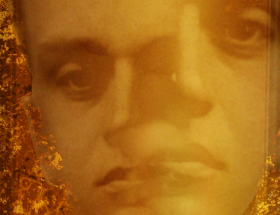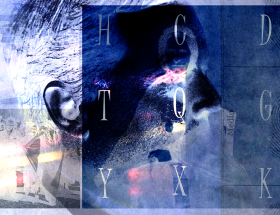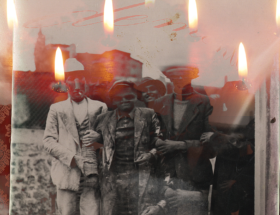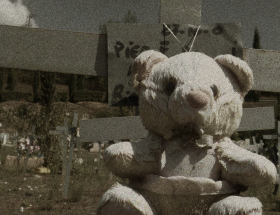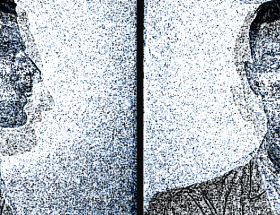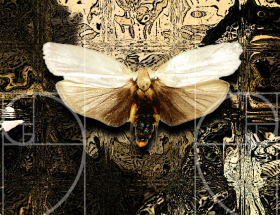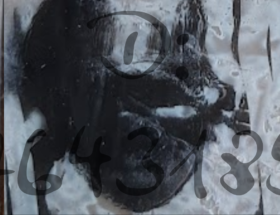Considered in its various ways, expression, effects and remedies
Composition I
The Lar expresses its the thoughts and affections in men: remembrance, with impressive vivid experiences of recollection, tends to preserve and pass on in distant future times, those places, those expressions of ‘thoughts and affections that formed their self-consciousness. Different ways of survival of identity.
In reality, as Saverio Baltieri lucidly observed, it was not the current thinking of the time that was contaminated, but “this perceived instability” stemmed from the shabby emotional prostrations, after the events that saw the best affections fall into ruin, or for the abandonment in which loved ones were left behind; so that while the little compassion that remained there, was extinguished immiserated and disheartened, amidst the dulled emotions, pessimistic convictions were undermined. Consequently, not caring for the respect and love of one’s affections, the person thus now tried breathed an air pregnant with recollections, and finally in loneliness succumbed to the infiltration of the Lar, which after taking possession of the person made him the servant of his perceptions.
As can be clearly understood, the triggers of the Lar’s penetration into the person, placed the emphasis, on the psycho-geographical and meteoropathic factors that are the recollections. For a long time, in fact, the doctrine of atmospheric feelings has been ascertained, which explains the origin of the affective pitfalls through the diffusion in the air of the so-called Lares that came from phenomena expressed by one or more Spiritus loci present in a given territory and coming into contact with man.
Returning here to the solvent point that such an effect entails, at the time when it is regulated, according to the prescribed order of remembrances, I wished to point out how, in that particular time that today still is not, that astonishing affection called Paramnesia possibly developed, so as to add to it of my early argument with a personal treatment of the phenomenon, now incontrovertible, in order to reach a possibly clear conclusion.
In order to unite in a single concept all that, around the same paramnesic effect, Baltieri had written in his work, to his volumes I wanted to add of what I had been able to study around the subject.
In Baltieri’s volumes, predating the Egloga that a great poet, Blessed Ramon Llull, had conceived on the manifestation of the Lar, I found it necessary to supplement with these dissertations of mine the entire corpus of treatises.
My purpose is not to report in this study either all the news in on the Lives of the Lar or of the character that such presence hosts, nor all the works that such affection produces, nor less to give judgment of them as they have done in previous speculative studies.
I would like to attempt simply to give out what remained in the experience of us and to make mention of many possible remedies of which, for the sake of the future, we may have knowledge so that, on the other hand, for such effects we may not suffer any.
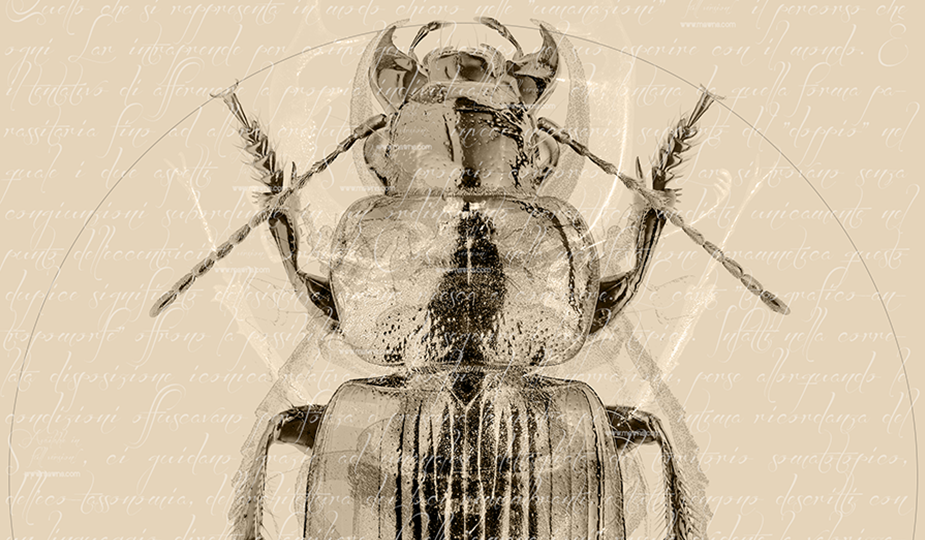
Composition II
In order to expound the means and remedies, by which the person suffering the effect of the Lar can avail himself, I want to begin by exposing the case as it arises.
The person who is in a state of prostration, who begins to distrust himself, because he is greatly tried by severe and extreme weakness, is the perfect prey of the Lar. It finds in that frailty its natural home. The force of currents generated by aerial vortices is the force of the Lar. In it and through it the Lar introduces itself into the host body.
One must therefore remain persuaded of this truth, of how predictive meaning can be thought of, wrongly, as coincidence, and not as a relationship between person and Lar. Take refuge in a chance effect of coincidence.
The sensitive cognition of absolute stillness with which one is enveloped manifests itself allor when the Lar, taking possession of the particular vital areas, by methodical exploration, gets to know us, even in the most minute humors. It is a journey traveled through a gallery of mirrors to arrive at a refoundation of meaning.
The Lar comes to the new world, digging through buried memory, to rule as an enlightened ruler. With just command and serene judgment he controls contrasts and disturbances. With measured temper brings conviction to be mild and finally faithful to acquired memories.
In becoming a double self, the Lar stretches its boundaries into the time of a greater history. For the ethereal fields of space, the newly conquered body will save the Lar from dispersing into indistinct oblivion.
And so, the Lar “sheltered from fierce winds and thundering whirlwinds of no time, swift in flight, reaches the longed-for affection.” From Egloga VI of Blessed Ramon Llullo
Baltieri specified how the use of Vanadium could only be a partial soother. As the swirling courses intensified, the prostrate body perceived in the environment a profluence of the disintegrating vapor.
In addition to this, it was recommended to those destined for the forced reception, not to indulge in melancholy, to gather the original forces, the primeval convictions. To this end, there seems to be no room left for reverie, which, like fumigations, prove obnubilating the more methodically, according to individuality, they manifest themselves.
The effects of the fertilization that invades the memorial loci of the person do not exhaust even though countered somewhat feebly by the instinctive disavowal, which the continuous action of remembrance continues to rage.
In the days following de Lar’s occupation of the loci, very deep anxieties fill the person’s soul, and rising to attention the troubling effects, test the weak securities already too much tried by the general prostration.
To the defense of the memorial loci must not fail the activity of the ascribed signifiers, which from the work of awakening foundational memories, urge in the above the points most threatened by subrogation, and strangeness that the pressing assertion of the Lar provokes.
And if the felt air becomes strongly warmed then it is certain that the way has been opened to personal culture, meaning by this, acquired cognitions and experiences. The Lar thus enlarges shared spaces and resolves adverse moods.
But if contrasts do not cease, neither do attempts at a Lar resolution, which Ei tenaciously resumes the more frequent the conflict becomes, and the more urgent. Beyond the dispositions, which once settled he assigns from his place to the various perceptive channels, he sustains and cares for those very loci in which he serves in a mutual relationship of subsidiarity.

